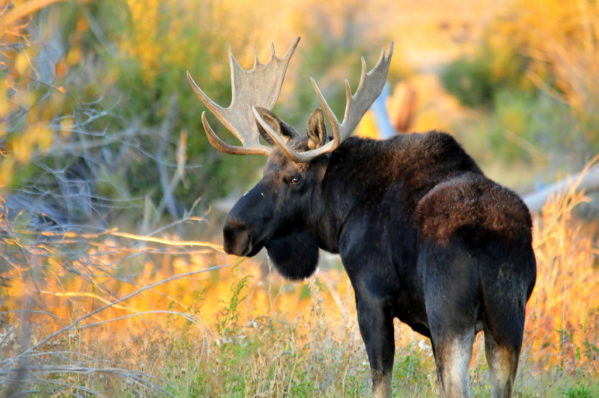One of the great things about life in Wyoming’s Upper Hoback Valley is the amazing variety of wildlife we have as neighbors. Among other things, the Hoback Basin is home to one of the largest herds of Shiras moose in the continental U.S. This majestic animal is actually the smallest of the four kinds of moose found in North America, but it’s no shrimp-a full-grown Shiras bull can weigh up to 1,800 pounds and measure seven feet tall at the shoulder.
For the past three years, a research group from the University of Wyoming has been studying the Shiras moose in our area, with an eye to learning as much as we can about their migration routes, breeding patterns, and nutritional conditions. It’s been my privilege to help support this effort financially. The idea is to build up a database so we can have an informed perspective about how changing habitats are impacting our wild neighbors. Among the report’s observations – you can read the most recent research reports here (2013) and here (2014) – is that the local herd is not getting enough to eat and, as a result, not as many Shiras calves are being born and adult survival rates are dropping.
One of the things that led me to get involved in last year’s successful campaign to buy up oil and gas leases on some 58,000 acres of land in the Hoback Basin was my concern over the possible impact widespread oil- and gas-drilling might have on wildlife like the Shiras moose. The ongoing moose study is an important way to ensure we make informed decisions in our role as custodians of these natural treasures.

